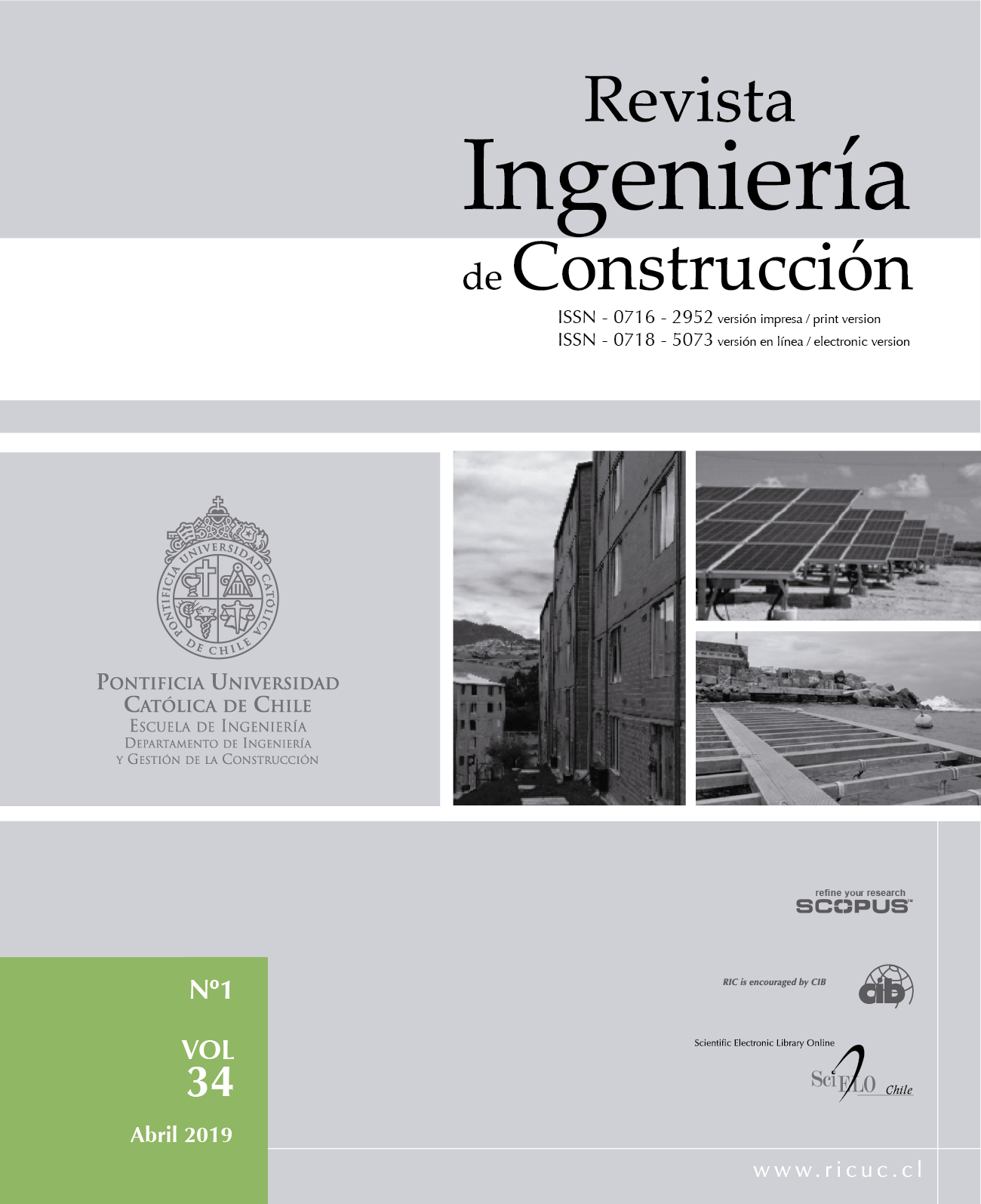Detection of delaminations in reinforced concrete bridges using Infrared Thermography
DOI:
https://doi.org/10.4067/S0718-50732019000100055Keywords:
Non-destructive evaluation, infrared thermography, bridge inspection, concrete, delaminationAbstract
The objective of this study is to evaluate the capability of infrared thermography for delamination detection in different types of concrete. This methodology was experimental, where two test concrete specimens with water/cement ratios (w/c) of 0.50 and 0.60 were prepared, and delaminations were simulated by inserting polystyrene plates (100 × 100 mm) with different thickness at different depths (25, 50 and 75 mm). The results show that the test body with lower w/c ratio could detect defects more easily than the test body with higher w/c ratio. The maximum depth of delamination detected was 50 mm with a minimum thickness of 3 mm. The results also show that morning hours are the best time for detection. However, nighttime as an alternative period is presented. This technique is effective for superficial delamination detection, essentially for those elements exposed to sunlight during the day and high relative humidity in nocturnal periods.


